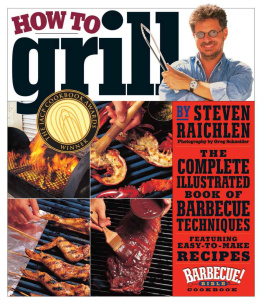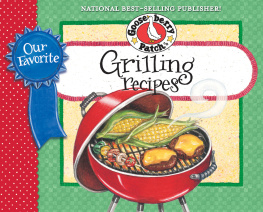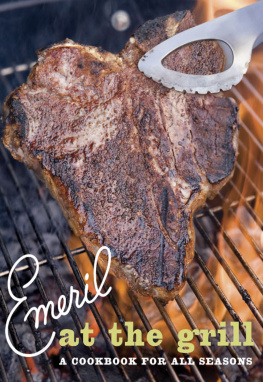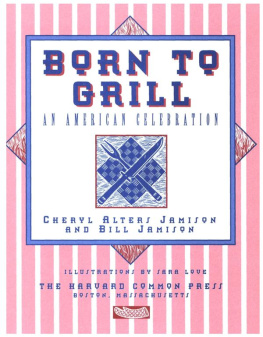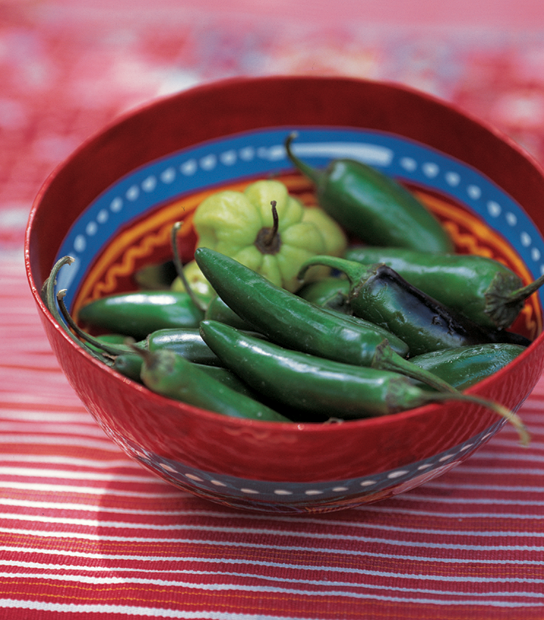Contents

Grilled chicken must be the most frequently botched food in America. Weve all seen the sad results: chicken burned on the outside but still raw in the center, a breast dried to the texture of straw, bland meat seasoned with no more than a commercial barbecue sauce sauce, or, in more recent times, the poultry flavor obliterated by a blast of rude spice. Outdoor cooks havent neglected a single way to kill that innocent bird over and over again.
Properly grilled chicken is a delight, lightly browned and crusted on the surface, succulent and tender in the center. Seasoned well, it boasts broader appeal than any other backyard food. For an everyday family meal, chicken offers solid value, and its easy and relatively quick to grill when you know what youre doing. It is also great for entertaining because everyone likes chicken andunlike a lot of other foodsfew people shun it for health or dietary reasons.
Perhaps most important to us, chicken can embrace an incredible range of complementary flavors. In the pages ahead, well use the grill for Harissa Hot Wings, Tequila-Lime Chicken Tacos with Charred Limes, Chicken Pasta with Sage and Capocollo Sauce, and Chicken Breast Haystacks with Green Tomato Butter. Well also skewer them for rotisserie roasting, and even smoke one on top of a beer can. For times when youre in a traveling mood, well present ample opportunities to enjoy Italy one night, India the next, and then move on to Morocco, Mexico, the South of
France, and Southeast Asia, before returning home at the end of the week to American Barbecued Chicken Pizza. Nothing else you can grill offers such a full turf of tastes. If youve been keeping your chicken cooped up in a cubbyhole of flavors, its time to let that bird fly.
The Two Most Common Grilling Mistakes
Backyard cooks often assume that grilling chicken is a no-brainer. Most of us earned our stripes at the grill with hamburgers and hot dogs, which arent much tougher to make than peanut butter sandwiches. Chicken seems like an easy next step, but its actually more of a short leap. To land there on your feet, you have to hurdle the two most common mistakes in grilling.
The most prevalent problem, oddly, is a tendency to forget that were cooking. Intent on enjoying the outdoors, spending time with family and friends, and imbibing our favorite libation, we often neglect the basic correlates of all cooking, time and temperature. To cook anything well, you must apply a proper level of heat for an appropriate period of time. Too often in grilling, we dont bother to measure and control the intensity of the fire, and we judge the cooking time on the basis of how long it takes to drink a beer.
That approach works to some extent with forgiving foods like burgers and dogs, but with chicken and other delicate or fine ingredients, its a recipe for disaster. We all understand this almost instinctively inside, working in our kitchens: no one would ever try to bake a chicken potpie by guessing about the oven temperature and then just letting it cook until theyre ready to eat. Outside, though, we want to play looserbut the same principles apply.
The second major mistake is to fail to recognize and then seek true grill taste. Every cooking method, from boiling to broiling, contributes its own distinctive characteristics to food. Perfectly fried chicken for example, presents a heady combination of crunchy skin and juicy interior, whilea slowly simmered special chicken soup preserves the individual integrity of the various ingredients as it tenderizes and harmonizes them.
The goal in grilling is to deepen the inherent flavor of food through the chemical process of high-heat browning (what scientists call the Maillard Reaction). With poultry, fish, and meat in particular, the browning and crisping of the exterior requires direct heat at the right temperature. The fire needs to be hot enough to shrink the muscle fibers on the surface, thereby concentrating the flavor, but not so hot that it burns or chars the outside before cooking the food through. When done well, the result is a robust amplification of the foods natural flavor along with a tasty textural contrast between the crusted surface and the succulent interior. Its an outcome distinctive to grilling, unlike anything obtained by any other cooking method except open-flame rotisserie roasting.
The only way to get that premier flavor is to fully cook all surface areas of poultry, fish, or meat over direct heat. The principle is simple, but it runs counter to the way that many Americans grill at home. To cook entirely with direct heat means keeping the grill open, just as chefs do in restaurant kitchens, rather than covered. When you lower the lid for cooking, as many American grill manufacturers recommend, you convert the grill to an oven and cook partially with the heat reflected off the cover. In effect, you are grilling and baking at the same time, a situation that remains unchanged even if you open the lid occasionally to turn the food and expose other areas to direct heat. The resulting flavor reflects the method, providing only a modicum of grilled texture along with a disappointing baked taste.
Using a cover does simplify the cooking process, particularly for inexperienced cooks, and that is the main reason manufacturers suggest it. You put the food in and leave it there until ready, just like in an oven, and youre less likely to torch your vittles or your eyebrows. With an open grill, you must watch the food, cooking it one side at a time, turning it every few minutes, and moving it around as necessary to avoid flare-ups. You must also manage the temperature of the fire and keep track of timewell enough to gauge doneness. Some industry promoters say all that is just too difficult for an American backyard cook, though its how people grill at home everywhere else in the world. Personally, we like paying attention to the cooking, but even if we didnt, the flavor trade-off would make the slight extra effort worthwhile.
Covered cooking on a grill does make sense in bad weather, or when you want to bake or roast food outside. Just because youre using the grill in those situations, however, doesnt mean that youre grilling. To call all food cooked on a grill grilled, as some of the marketing professionals do, is somewhat akin to claiming that every dish prepared on a kitchen burner is stoved, regardless of whether the process is actually sauting, deep-frying, or boiling. Most great baked chicken dishesfrom the coq au vin of France to the King Ranch chicken of Texascan be cooked in a baking dish in a covered grill if you wish, but you wont be grilling. Theres no use of direct heat and no grill flavor. We stick with actual grilling in this book except in the chapter on whole chickens, which are too large to cook entirely with direct heat.
Grilling Chicken to Perfection
Grilling imparts a bona fide heartiness to chicken that poultry often lacks. It brings out the authentic natural flavor while crisping the skin or skinless surface in a way that highlights the internal tenderness and juiciness. Spice rubs, marinades, sauces, and relishes can add other special flavors to the chicken, but they shouldnt distract from the distinctive grill taste.






